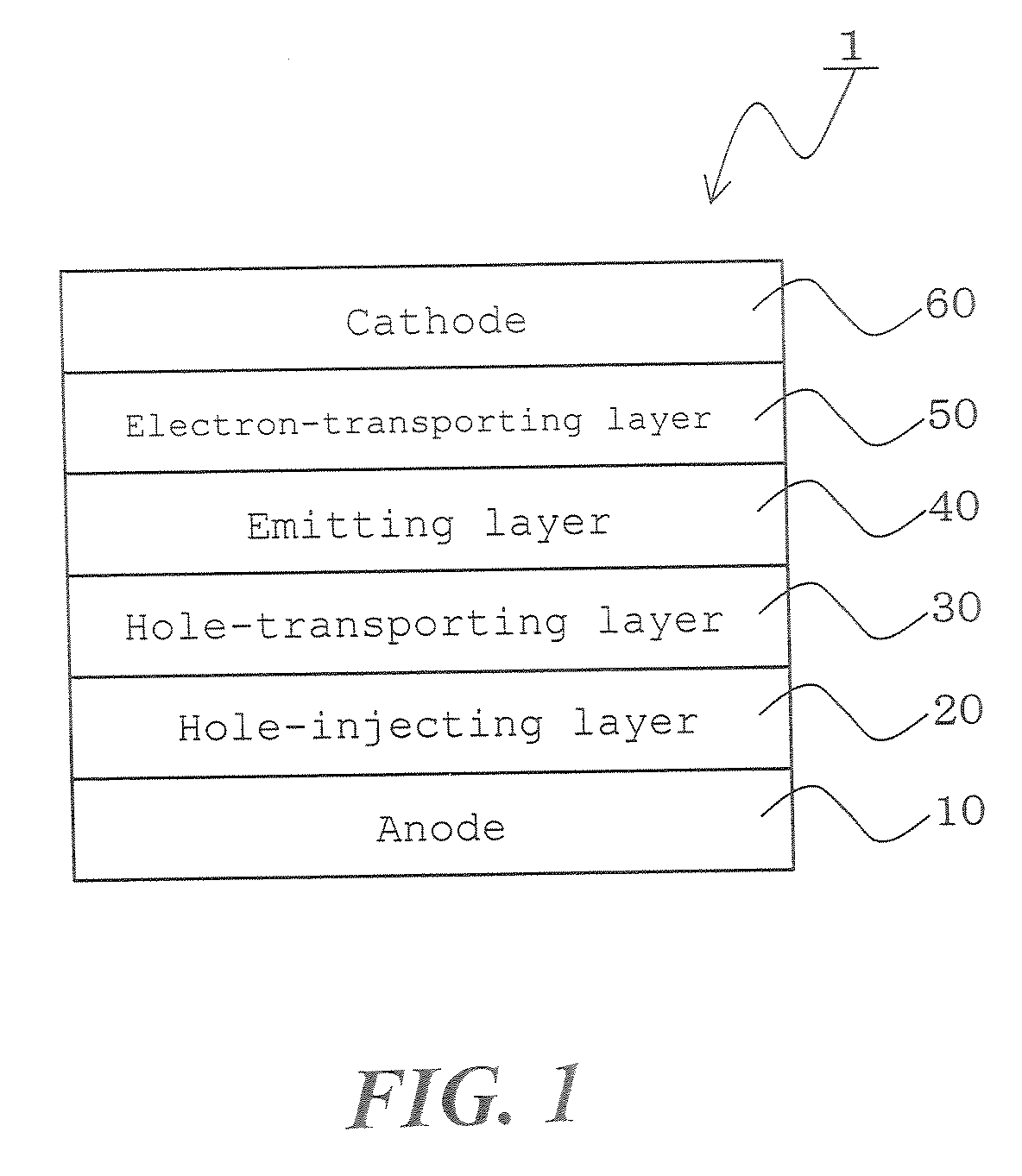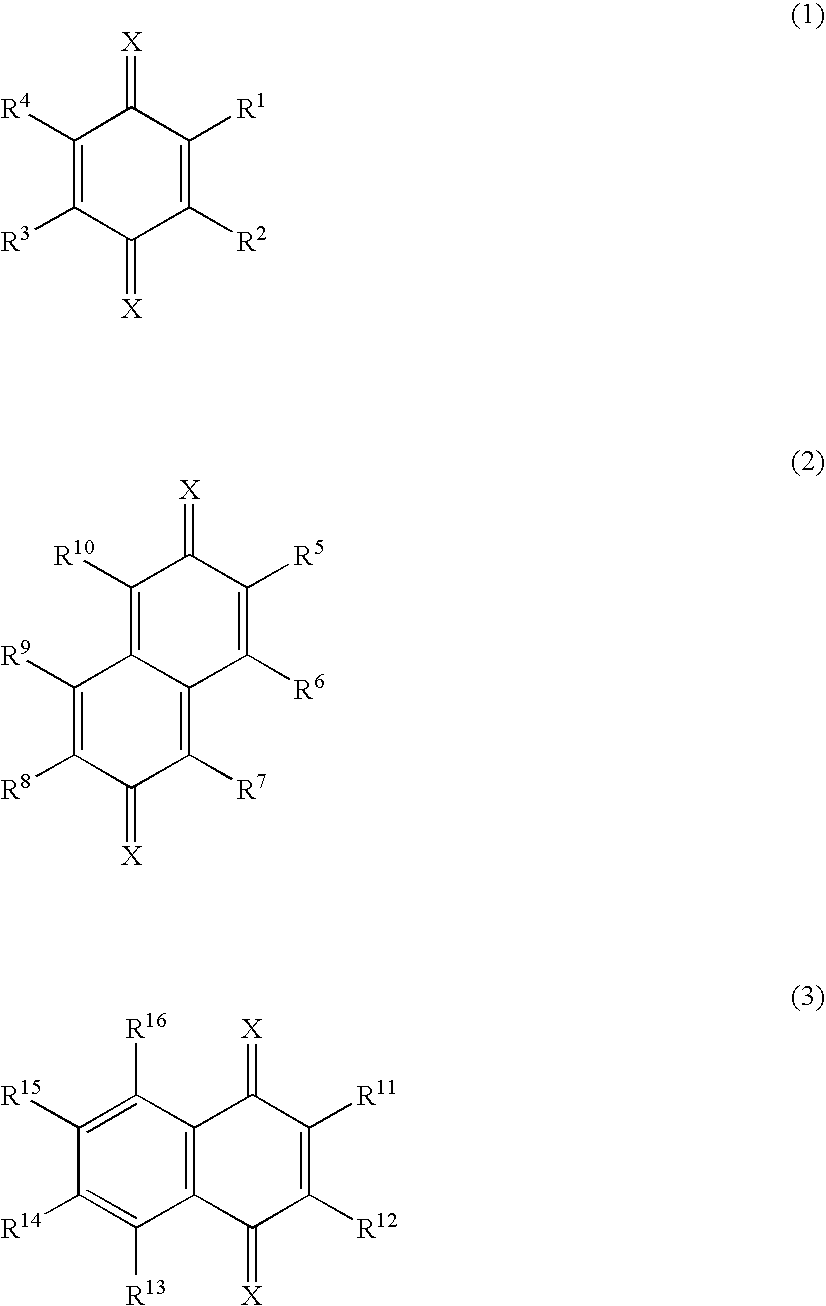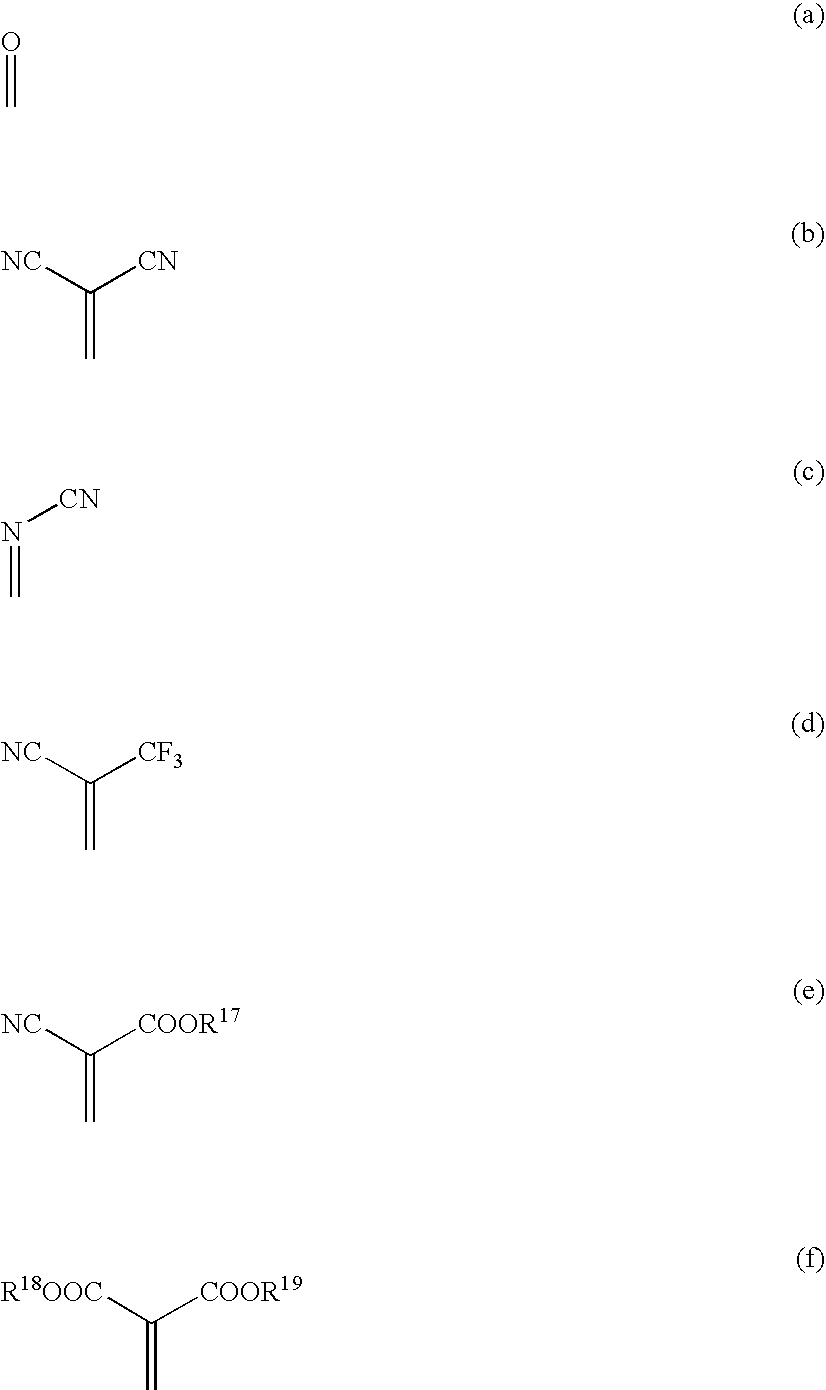Material for organic electroluminescent device and organic electroluminescent device using the same
a technology of electroluminescent devices and materials, applied in the direction of luminescnet screens, discharge tubes, organic chemistry, etc., can solve the problems of exhibiting a long lifetime, and achieve the effects of reducing crystallinity, reducing energy consumption, and high electron-accepting properties
- Summary
- Abstract
- Description
- Claims
- Application Information
AI Technical Summary
Benefits of technology
Problems solved by technology
Method used
Image
Examples
example 1
Synthesis of Compound (A-19)
[0169] 4.5 g of potassium t-butoxide and 10 ml of DMSO were mixed at room temperature under a nitrogen atmosphere, followed by addition of 5.2 g of 3-trifluoromethylphenol. To the resultant mixture, a solution obtained by dissolving 4.3 g of 2,5-dibromobenzoquinone in 15 ml of DMSO was dripped under stirring at room temperature for 8 hours. Thereafter, ethyl acetate and water were added to conduct separation. The organic layer was filtered off by adding sodium sulfuric anhydride, and the solvent was distilled off under a reduced pressure. A residue was purified in a silica gel column, whereby 3.0 g of compound (A-19) was obtained.
[0170] As a result of an IR measurement of the compound, absorption of a carbonyl group was observed at 1665 cm−1. Mass spectrometry revealed that the compound had a peak at an M / Z of 428.
[0171] The compound was then dissolved in acetonitrile so that the concentration became 0.01 mol / l. A reduction potential was measured by cy...
example 2
Synthesis of Compound (A-1)
[0172] A solution obtained by mixing 1.7 g of the compound (A-19) as obtained above, 0.54 g of malononitrile and methylene chloride was stirred while cooling on ice under a nitrogen atmosphere. Subsequently, 2.4 ml of titanium tetrachloride was dripped, followed by dripping of 3.6 ml of pyridine. After stirring for 5 hours, methylene chloride was distilled off under a reduced pressure, and 5 ml of 1N hydrochloric acid was added. A precipitate was recrystallized from acetonitrile, followed by sublimation and purification, whereby 0.8 g of compound (A-1) was obtained.
[0173] As a result of an IR measurement of the compound, absorption of a cyano group was observed at 2222 cm−1. Mass spectrometry revealed that the compound had a peak at an M / Z of 524.
[0174] The compound was then dissolved in acetonitrile so that the concentration became 0.01 mol / l. A reduction potential was measured by cyclic voltammetry using tetrabutylammonium perchlorate (TBAP) as a supp...
example 3
Synthesis of Compound (B-7)
[0175] 2.7 g of compound (B-7) was obtained in substantially the same manner as in Example 1, except that 5.0 g of 1,5-dibromo-2,6-naphthoquinone was used instead of 2,5-dibromobenzoquinone and 5.2 g of 4-trifluoromethylphenol was used instead of 3-trifluoromethylphenol.
[0176] As a result of an IR measurement of the compound, absorption of a carbonyl group was observed at 1658 cm−1. Mass spectrometry revealed that the compound had a peak at an M / Z of 478.
[0177] The reduction potential obtained by cyclic voltammetry was 0.01 V.
PUM
| Property | Measurement | Unit |
|---|---|---|
| transmittance | aaaaa | aaaaa |
| transmittance | aaaaa | aaaaa |
| thickness | aaaaa | aaaaa |
Abstract
Description
Claims
Application Information
 Login to View More
Login to View More - R&D
- Intellectual Property
- Life Sciences
- Materials
- Tech Scout
- Unparalleled Data Quality
- Higher Quality Content
- 60% Fewer Hallucinations
Browse by: Latest US Patents, China's latest patents, Technical Efficacy Thesaurus, Application Domain, Technology Topic, Popular Technical Reports.
© 2025 PatSnap. All rights reserved.Legal|Privacy policy|Modern Slavery Act Transparency Statement|Sitemap|About US| Contact US: help@patsnap.com



